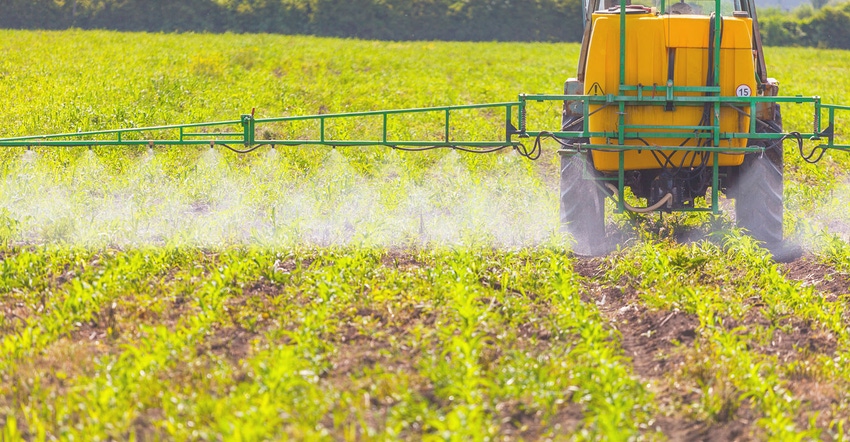October 25, 2019

The Agricultural Retailers Association is praising the EPA’s proposal to update the Worker Protection Standard pesticide regulation regarding Application Exclusion Zone requirements.
“These targeted revisions will reduce regulatory burdens, improve industry compliance, and ensure it is feasible for farm owners to implement without incurring a significant adverse economic impact,” said ARA President and CEO Daren Coppock. “The initial AEZ regulations were impractical and would have severely disrupted normal agricultural pesticide applications.”
“EPA’s proposal would enhance the agency’s Application Exclusion Zone provisions by making them more effective and easier to implement,” said EPA Administrator Andrew Wheeler. “In listening to input from stakeholders, our proposal will make targeted updates, maintaining safety requirements to protect the health of those in farm country, while providing greater flexibility for farmers.”
Specifically, EPA is proposing to:
Modify the AEZ so it is applicable and enforceable only on a farm owner’s property, where a farm owner can lawfully exercise control over employees and bystanders who could fall within the AEZ. Off-farm bystanders would still be protected from pesticide applications thanks to the existing “do not contact” requirement that prohibits use in a manner that would contact unprotected individuals.
Exempt immediate family members of farm owners from all aspects of the AEZ requirement. This will allow farm owners and their immediate family members to decide whether to stay in their homes or other enclosed structures on their property during certain pesticide applications, rather than compelling them to leave even when they feel safe remaining.
Add clarifying language that pesticide applications that are suspended due to individuals entering an AEZ may be resumed after those individuals have left the AEZ.
Simplify the criteria for deciding whether pesticide applications are subject to the 25- or 100-foot AEZ.
EPA will be accepting public comments on the proposed updates for 90 days after the proposal is published in the Federal Register.
Find additional information at www.epa.gov/pesticide-worker-safety/agricultural-worker-protection-standard-wps
Comments
“NASDA appreciates the EPA’s continued steps to prioritize worker safety. Additional and improved guidelines for implementing pesticide safety standards are always welcomed, as NASDA members hold highly the responsibility of protecting our nation’s agricultural workforce,” said National Association of State Departments of Agriculture CEO Dr. Barb Glenn.
“The American Farm Bureau Federation welcomes EPA’s effort to refine and improve the application exclusion zone requirement. It’s part of the worker protection standards rule, which was recently revised in a way that has proved challenging for many farmers," said American Farm Bureau Federation President Zippy Duvall. "Every effort to make the rule more sensible and practical for farmers while safeguarding workers is important. EPA’s step today to assure that only those areas under a farmer’s control are enforceable is a common-sense clarification, among others designed to reflect on-the-ground farming practices.”
Background
The original WPS regulation was enacted in 1992 under EPA’s Federal Insecticide, Fungicide, and Rodenticide Act authorities to protect farm workers from pesticide exposures in production agriculture. The WPS requires owners and employers on agricultural establishments and commercial pesticide-handling establishments to protect employees on farms, forests, nurseries and greenhouses from occupational exposure to agricultural pesticides.
In 2015, EPA finalized various significant revisions to the 1992 WPS. Among the 2015 revisions was a new provision requiring agricultural employers to keep non-applicator workers and all other individuals out of an area called the “application exclusion zone” during outdoor pesticide applications. The AEZ is the area surrounding pesticide application equipment that exists only during outdoor production pesticide applications. The AEZ will remain 25-feet in all directions for ground pesticide applications, and 100-feet in all directions for outdoor aerial, air blast, air-propelled, fumigant, smoke, mist and fog pesticide applications.
The initial intent of the AEZ was for it to act as an extra buffer zone supplementing existing WPS provisions for farm workers to better protect them and other on-farm persons that could be contacted by pesticides.
Source: EPA, ARA, which is solely responsible for the information provided and is wholly owned by the source. Informa Business Media and all its subsidiaries are not responsible for any of the content contained in this information asset.
You May Also Like




